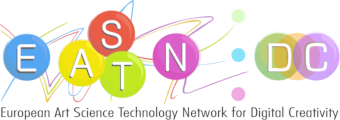SUMMARY
The paper seeks to unfold the interrelation and interaction of parametric 3d digital models and the dynamic physical models in design process of a fashion collection, attempting to understand the role of computational and analogue models, to think, to be creative and to control so to achieve the desired effect.
ABSTRACT
Nowadays there has been a lot of discussion about computational design and the way it is used in creative fields. Computational design and fabrication tools enable the creation of complex forms and geometries that are difficult to be designed otherwise and it is really impressive how digital design systems and digital fabrication can offer a whole new realm of possibilities for architectural expression. But what about the physical architectural models? Are they tending to lose their influence and their utility in the design processes and be bleeped out from the 3D representations only? This question in combination with the new trend that involves architectural tools and techniques in the design process of a fashion collection triggered the dawn of this research project that was part of an overall diploma thesis. The project aims to explore ways in which computer aided design systems can cooperate with physical models in order to produce a fashion collection made of paper. The project consists of three units: the study of the properties of the material - paper and the folding techniques by which it can be transformed in order to dress the body, the body itself, and the disciplines that compose the design of a garment in combination with the study of different patterns of garments.
In terms of methodology, the physical properties of the material - paper were studied extensively. Paper is a material with elastic memory that tends to return to its initial condition unless it has been deformed plastically. The paper’s behavior can only change its flat state by intervening to it via folding. After a series of experimentations, with the aid of “mountain” and “valley” folds, the paper was transformed from a 2D surface into a 3D form, from linear into curvy, and from a rigid material into an elastic one. The investigation was enriched with 3D representations of these paper models by 3D software platforms such as Rhinoceros, Grasshopper and Crane which is specialized in the simulation of origamis. On the one hand the 3D software platforms enable the creation of more complex geometries that would be difficult to be made or represented otherwise, but on the other hand they lack in the representation of the materials’ behavior and properties. For instance, unlike the digital parametric model, the paper can never return to its original state because it deforms plastically, whilst the first one can’t represent exactly the semi – rotary motion of the physical model. Thus, computation must be regarded as the key interface for material exploration and vice versa.
The research is completed with the study of the anthropometric measurements in relation to the body and its representation in 3D space. The conclusion that the body is the main axis of design, it was the reason behind the creation of an algorithm, in 3D software platforms (grasshopper), that needs as an input the person’s body measurements, such as the circumference of bust, waist, hips etc. and outputs the digital 3D representation of that specific body. In this case computational design is extremely useful for the design process of the project, since it formulates the specific. Where computer aided processes begin with the specific and end with the object, computational processes start with elemental properties and generative rules to end with information which derives form as a dynamic system (Menges, 2011). As far as it concerns, - the body, the algorithm converts it in an asset that can be used during the work on this project and in addition, as a tool for exhibitional purposes, in the context of human and computer interaction. After all these experimentations by both algorithmic and physical models, a paper garment was finally developed. The paper embraces like a "smart" surface the relationship of form, structure and decoration proving that the physical material and its properties are also crucial for the final product.
In conclusion, this project presents that the coexistence of both methods is vital for the creative design process because digital design systems can broaden the horizon of tectonics, architecture and fashion and especially in fields like prototyping, modelling, testing, and evaluation.
Back
“Reflections: Bridges between Technology and Culture, Physical and Virtual”
is supported by:






